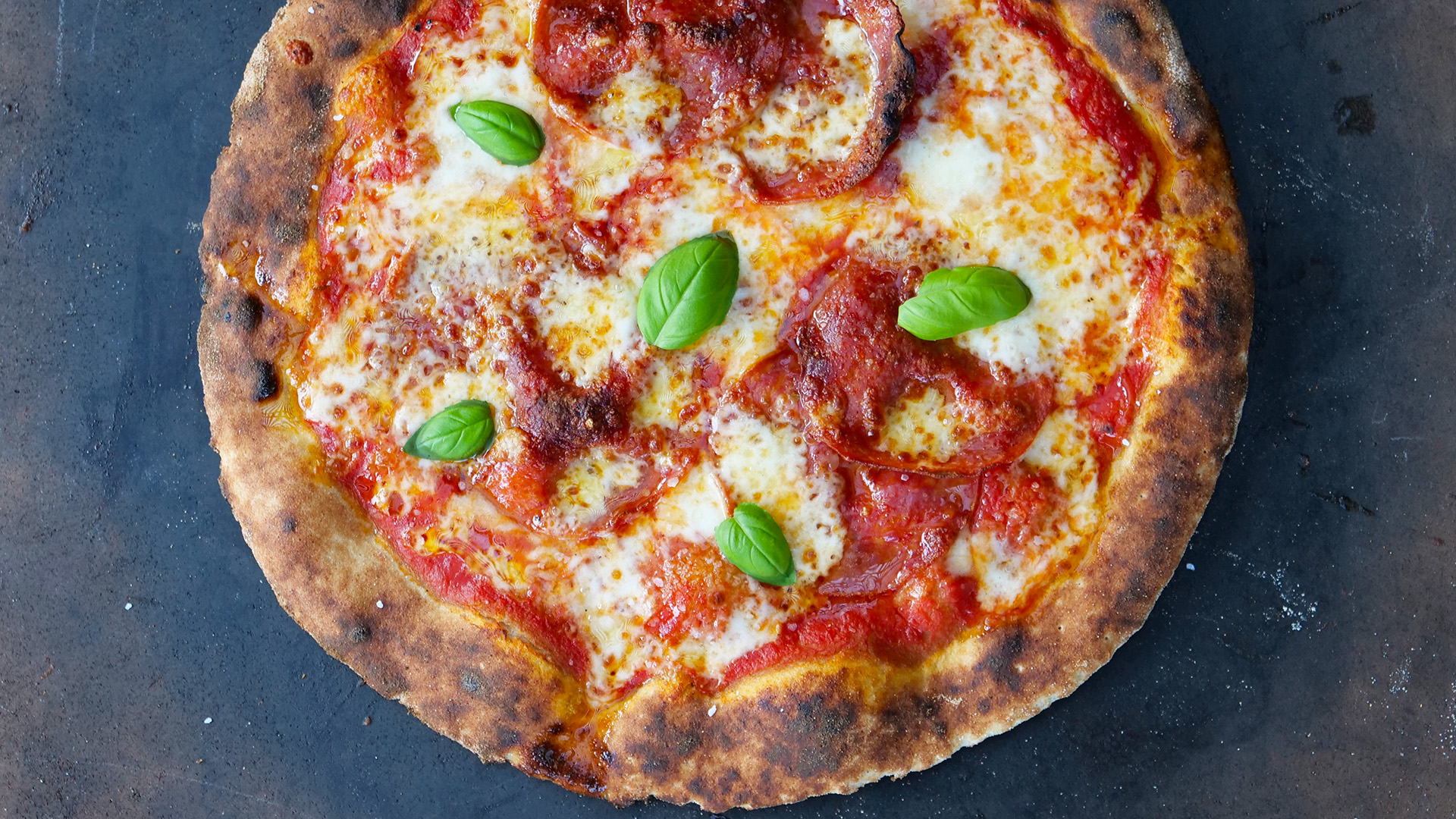
One of the Holy Grails of gluten-free pizza is a true Neapolitan: cooked in under two minutes in very hot ovens (~900º F), with a puffy, airy cornicione. Those kinds of temperatures are impossible to achieve in the normal ovens found in home kitchens.
(* For a great GF Neapolitan pizza recipe designed for the lower temperatures of home ovens, check out the version in our cookbook No Gluten, No Problem Pizza and/or watch this video.)
On the other hand, this recipe is designed for high-temperature Neapolitan pizza ovens. Whether you’re a pizzeria or a home pizzaiolo or pizzaiola with an outdoor oven (like our Ooni Koda), this is the recipe for you.
Each of these pizzas is fired for just two minutes. The dough is based on a custom blend of naturally gluten-free flours and starches (NO de-glutinated wheat starch) to give these pizzas the taste, texture, and appearance of legit Neapolitan pies… which they are. 🙂
In these photos, they’re topped with San Marzano tomatoes, fresh and/or shredded low-moisture mozzarella, basil, extra virgin olive oil, and meats such as prosciutto, pepperoni, and salame calabrese.
Enjoy!
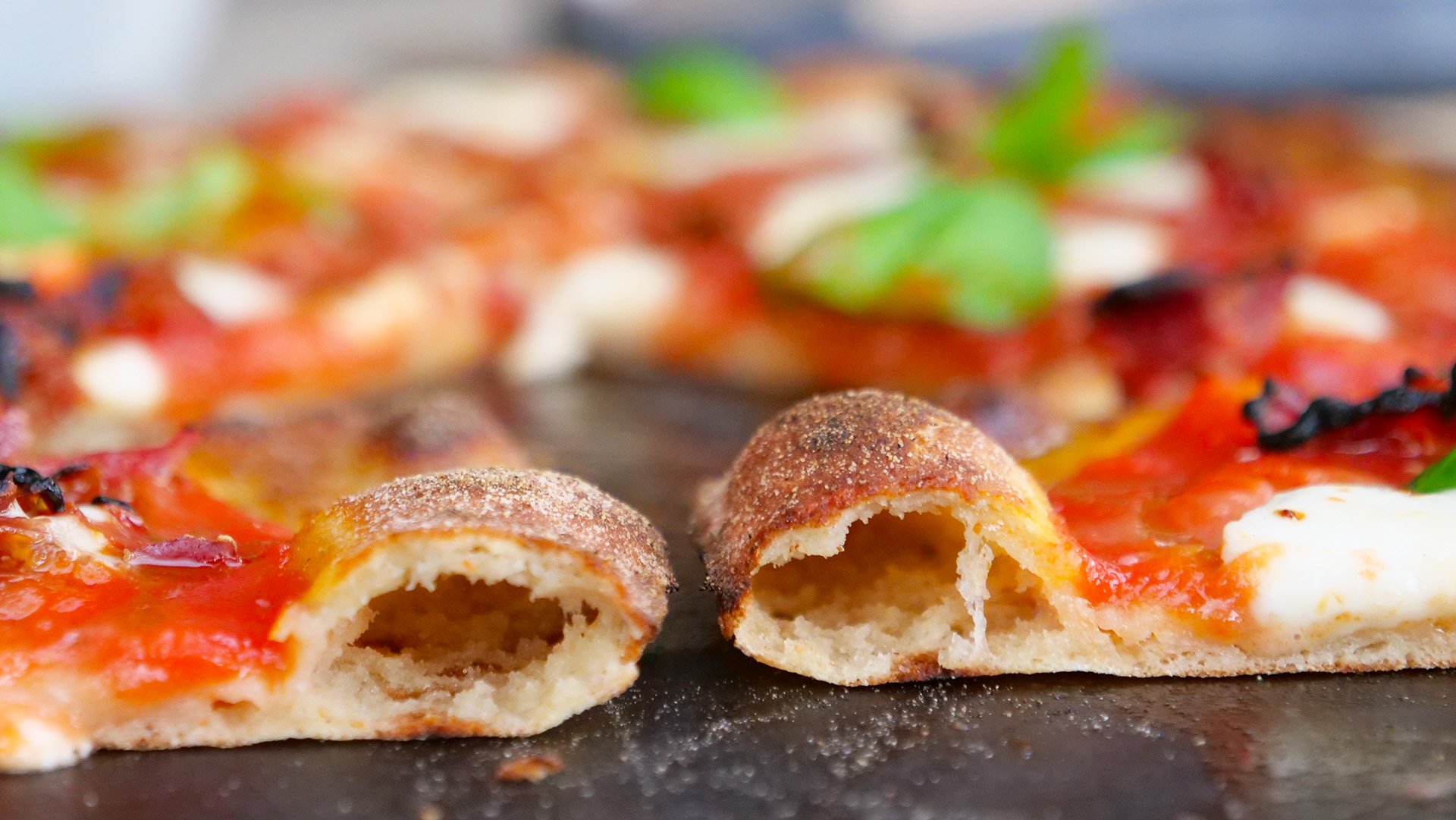

Ingredients
Method
- If you're a pizzeria with a Neapolitan oven, we assume it's already up to temperature and ready to crank out pizzas. If you're using a home outdoor pizza oven like the Ooni, preheat the oven on full flame for at least 15–20 minutes, or however long your oven takes to come up to Neapolitan temperatures (800–900º+ F).
- In a small bowl, whisk together the warm water, sugar, and yeast. Set aside and allow the yeast to activate, about 5 minutes, until foamy.
- In a medium bowl, whisk together the flours and starches, as well as the psyllium husk, salt, and xanthan gum.
- When the yeast mixture is foamy on top, add the olive oil and stir to combine. Then add the wet ingredients to the bowl of dry ingredients. Stir vigorously with a spoon until it is smooth and forms a dough.
- Place a large square of parchment paper on your work surface. Using extra brown rice flour, heavily flour the parchment paper.
- Dust your hands with brown rice flour and roll the dough ball to make sure it's smooth. Then place the ball onto the center of the floured parchment.
- Press the dough into a flat, 11-inch circle. Dust the dough and/or your hands with additional brown rice flour just as necessary to prevent any sticking. IMPORTANT: While you're pressing out the dough, occasionally shimmy the parchment paper back and forth to make sure the dough remains released from the paper. (Note: If the edges of the dough start to get jagged, you're probably pressing the dough too wide.)
- Slide a well-floured pizza peel between the dough and the parchment, so that the dough is now on the peel. Give the peel a shake to confirm that the dough slides easily and isn't sticking to the surface of the peel.
- Top the pizza with your chosen combo of toppings. Finally, brush the exposed dough of the cornicione with a thin sheen of water.
- Launch your pizza into a mid-temperature part of your oven, not too close to the flames / hottest part. For home outdoor ovens like the Ooni, turn the flame down to medium or medium-low just before launching the pizza. Rotate the pizza as needed to ensure even browning of the crust and cooking of the toppings. Total time in the oven should be about 2 minutes. (Note: In small ovens like the Ooni Koda, front-to-back heat management is crucial. If your pizza is a compass, cook north for 30–40 seconds, then south for 30 seconds, and finally east and west for about 15 seconds each.)
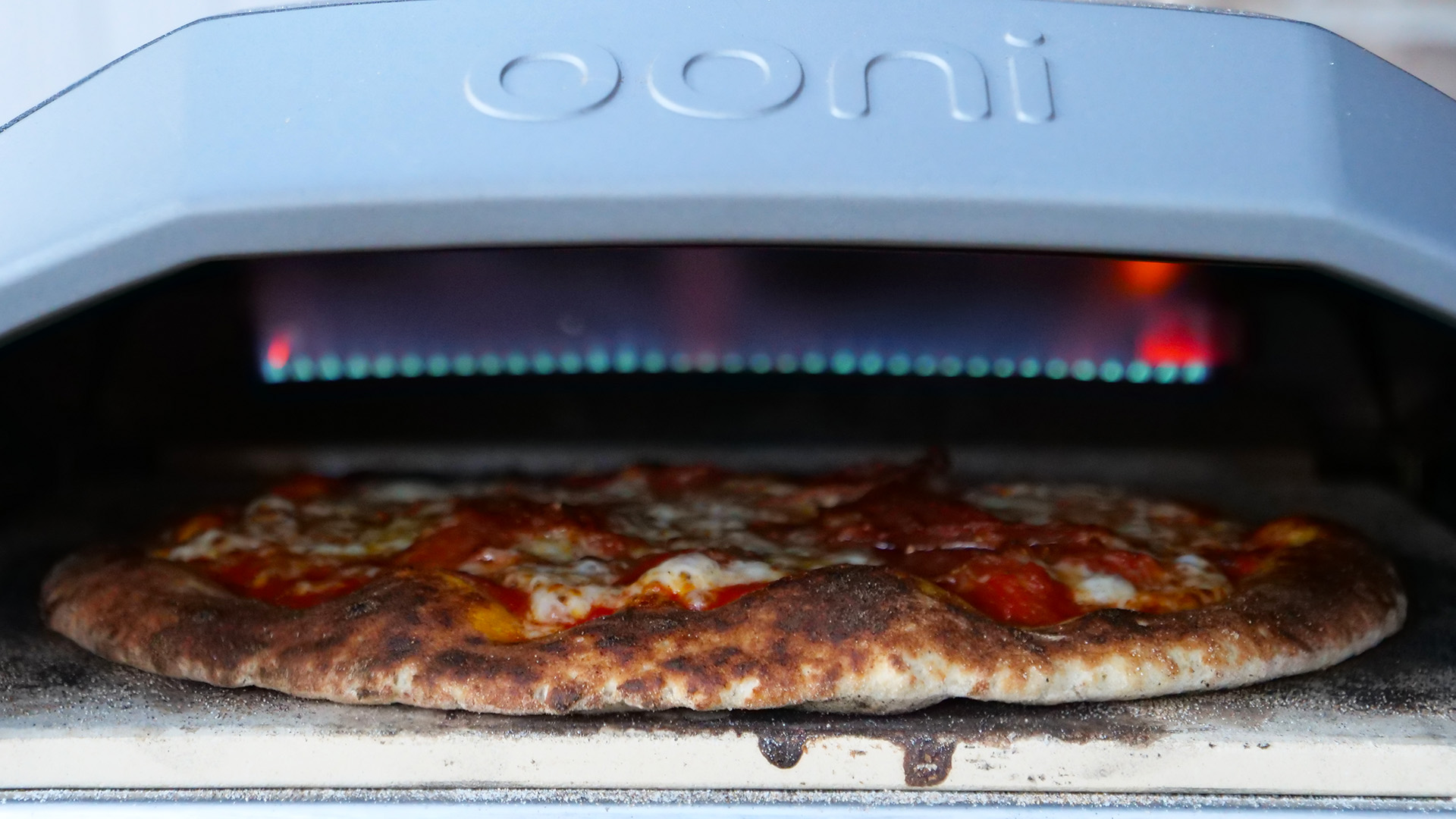
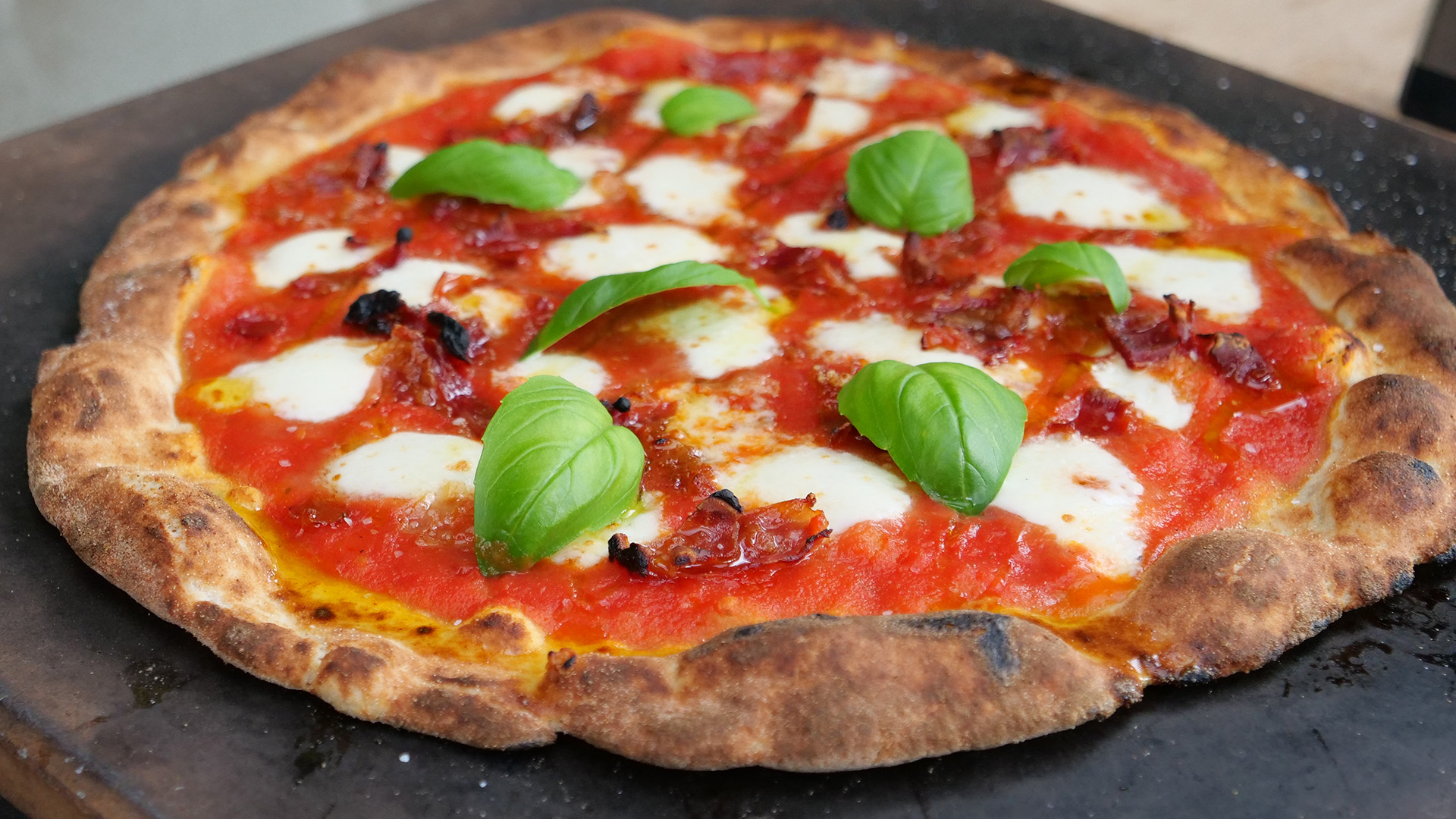
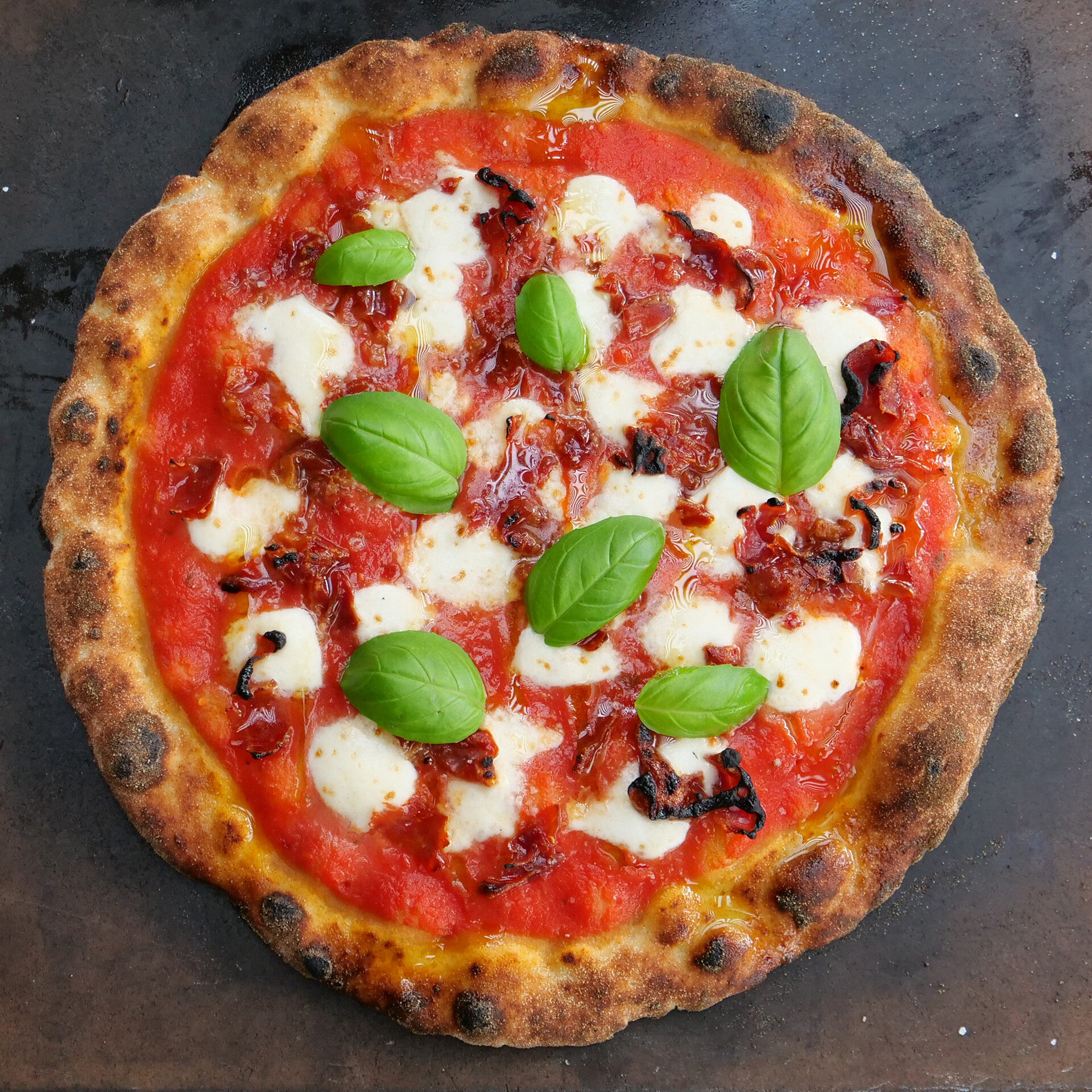
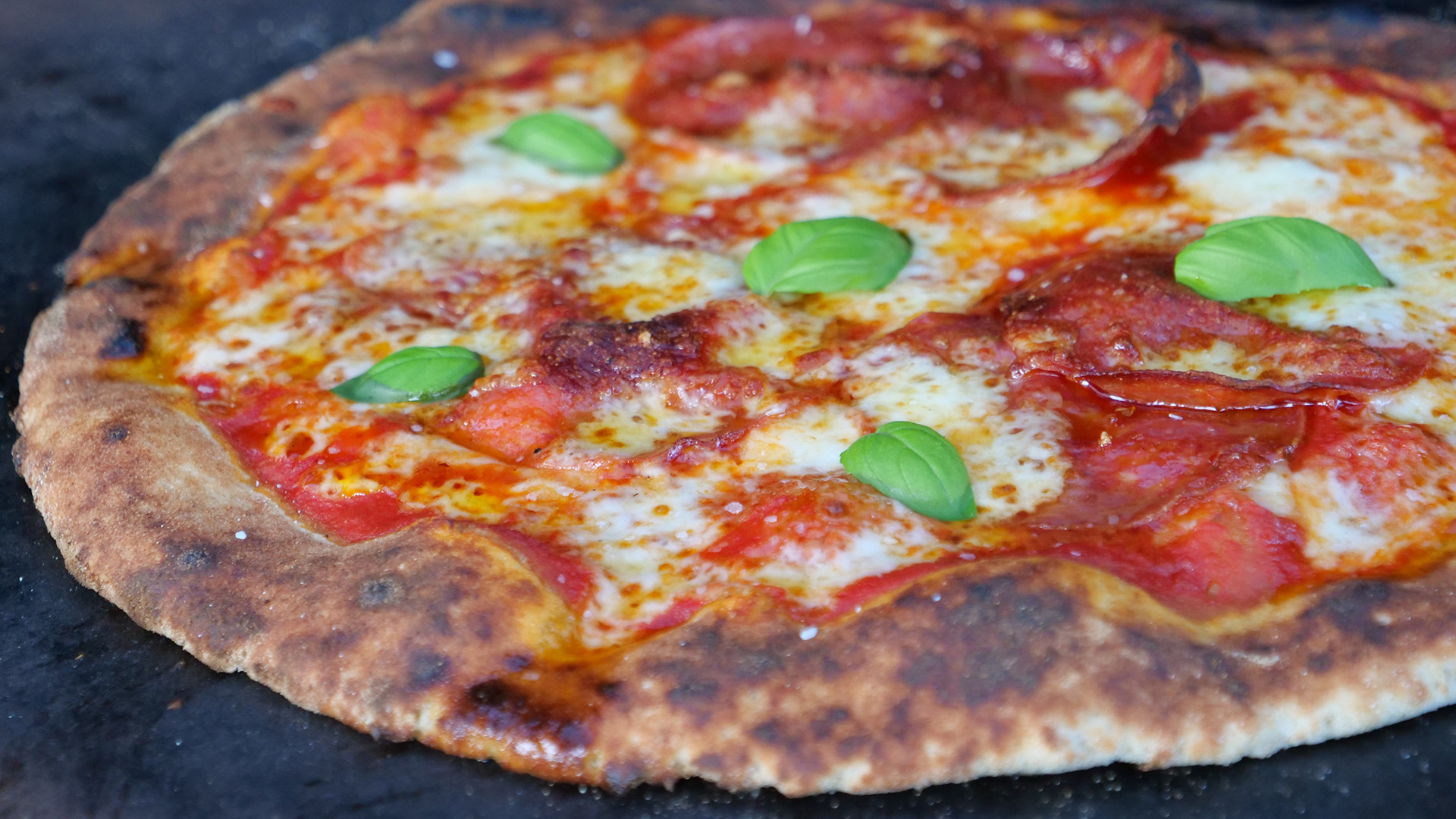
Gonna try this one. Been looking for a gf pizzadough recipie for my woodfired pizza oven since i was diagnosed with ceiliac last year.. The recipie does not say anything about rising time for the dough?
This dough doesn’t require rise time. In fact, the fresher the dough, the better the results with the puff of the cornicione. (By contrast, giving our New York-style dough a little rise time once you’ve pressed out the pizza does give the edge of the crust a better texture, although again the rise time isn’t required.)
Got to finally try this one. Good taste and texture. Struggle a bit to achieve the round shape.
Glad you enjoyed the recipe! Working with the dough gets easier with practice.
I am so excited to try this. THANK YOU!!
Yay! We hope you enjoy! Happy pizza making…
I cannot wait to make this! Thank you!
Just a question. Why not extra virgin olive oil?
Light olive oil has a higher smoke point, so we prefer it for using prior to firing the pizza. Reserve EVOO as a finishing oil to drizzle on the pizza for flavor after.
Hi. Thanks for the recipe. Curious, why light olive oil and not EVOO?
Thanks ! Going to give this a try.
We use light olive oil before firing the pizza, because it has a higher smoke point. We use EVOO as a finishing oil for delicate flavor after the pizza comes out of the oven.
Since receiving your book last year for Xmas (best gift ever!), I have made different styles every Friday, and I couldn’t have been more excited to finally try the Neapolitan in my brand new Ooni last week.
Well, after starting a mini fire with parchment paper in the Ooni, and trying to make the wetter dough not stick to the peel, and then running out of propane after a long delayed process, I am ecstatic to see that you have this article/recipe to address all my concerns. Needless to say we ended up finishing our neapolitans last week on the pizza steel in the oven, but I am excited to try again on the Ooni this week!!
You’re not alone! We lit our parchment paper on fire in our Ooni, too. Which was one of the motivations for developing this version of the recipe. 🙂
Just got your pizza book for Christmas – so excited! Looking into a baking steel, but wondering if I would be better off investing in a pizza oven like you use here….
The cookbook’s recipes are designed for home ovens, so you’re better off investing in a steel. That also gives you more versatility in terms of pizza styles, making pizza when it’s cold or bad weather, etc.
Happy to see this post. And would welcome more thoughts on the ooni stove. Is it worth it? A few years ago I had two children diagnosed with celiac. One of the things I miss the most is our weekly homemade pizza nights. Which were weekly occurrences. I just got a copy of your book last week. The introduction spoke to me. We have only started experimenting (quick NY crust). We’ve been pizza stone people. In looking at steel cooking sheets I went down the pizza oven rabbit hole. So, welcome more thoughts on the oven? Thanks!
A pizza steel like the Original Baking Steel and a home oven that gets up to 550ºF will be your most-versatile solution. We enjoy our Ooni, but if you live in a part of the world where it might be rainy, snowy. windy, and/or cold for part of the year, that limits how often you’ll use the Ooni since it should be used outside the home. We’ve invest in a pizza steel first. It’ll transform your pizza making. Then consider the Ooni for down the road when you want to expand your pizza-making setup. 🙂